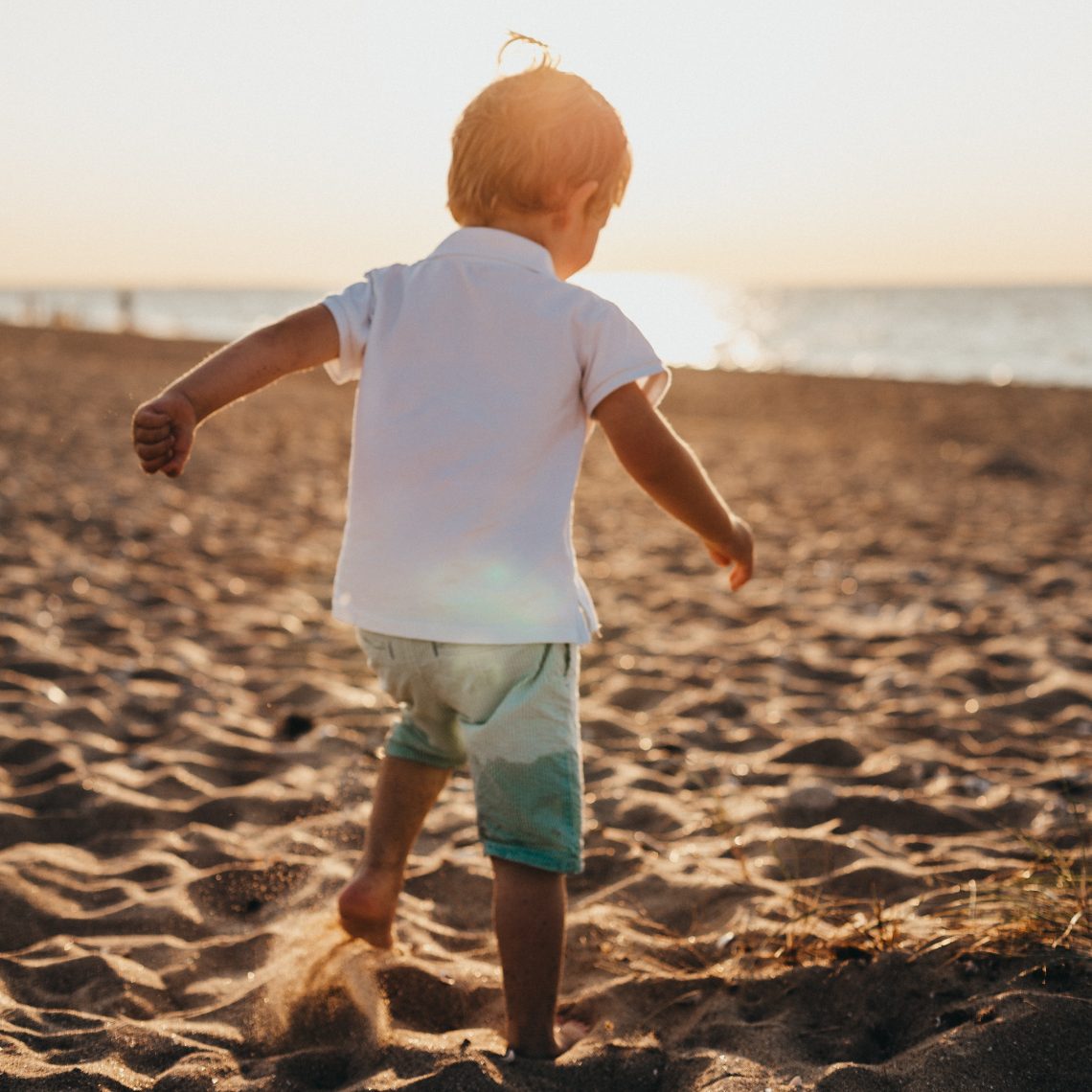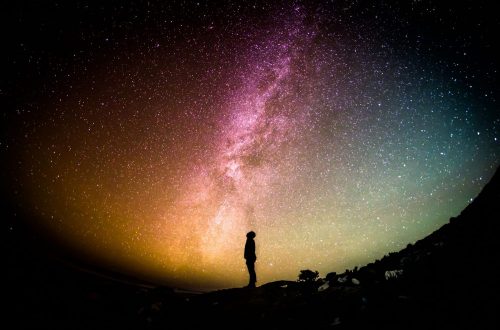
The seven-year stages
Under construction
If you look at human development from an anthroposophical point of view, there is always a seven-year phase in which a person develops more intensively at a particular level. From grandchild to schoolchild, to adolescence, to adulthood and so on until the end of life. The more you are aware of the phase of development of a child, the better you are able to guide a child in its development.
In this article, I describe what the developmental path of the child is in the light of the fourfold nature of the human being
Listen to this text via YouTube.
From 0 to 7 years: From baby to schoolchild
When a baby is born, the physical body is born, but the physical body is not finished yet. In the first 7 years, from baby to schoolchild, the physical body goes through an incredible development. All the energy in those first years goes into growing up physically, maintaining body temperature, digesting solid food, learning to walk, learning to speak, developing the nervous system, climbing, dancing, singing.... Never in life does a human being grow physically as much as in this phase, and these are all processes that the body learns unconsciously or by imitation.
The small child is still one with the world around it. External influences still have a great deal of influence on the developing child. Everything the child perceives through the senses is absorbed. As a parent, you therefore have an important role. You are the example and the small child imitates you; your words, your actions and even the intention behind what you do and say is absorbed by the small child.
Development support
In order to best support a child in this phase, it is nice if the child feels secure in a world of goodness. In a loving, positive, familiar environment that the parents or caregivers create. The ether body of the child is still fully in service of the physical body and therefore the child is dependent on our enveloping life forces. You offer a rhythmic progression of the day, the week and the year. You make sure that a child can get enough rest and sleep. You take care of the child when it is ill. You provide healthy food and boundaries, space and time for the child to play freely so it can develop healthily.
7 - 14 years: From schoolchild to adolescent
From the age of 6 or 7, a child starts to become school-ready. You can see it in the way they play, because there is more distance to the imaginative play. The drawing changes because it now clearly has a bottom and an top. Even the physical body shows that it is almost 'ready' because around school maturity, the milk teeth make way for permanent adult teeth. Children want to learn and interact with the world in a different, more conscious way.
In this phase of life, children have firmly settled into their own bodies. The ether body is no longer entirely at the service of physical growth. It is now free, as it were, to make its own habits, conscience, memory and temperament. The outside world enters, but no longer unfiltered. Impressions are absorbed, processed and made personal.
Developmental support
The small child grew by imitating; the school-aged child now wants to imitate. A hero or an idol, someone from real life or from visual stories provide the child with a guideline for the development of its conscience. Where the inspiring image touches the child's soul, an impulse can arise for a richly developing emotional life. The child forms its own preferences, develops standards and values and wants to place itself in the world by doing good. By giving children the opportunity to express themselves (through art, music, sport, drama or whatever), the child learns to understand themselves. When this is in harmony, the child blossoms into a world of inner beauty.
14 - 21 years: from puberty to young adulthood
In the phase of puberty, a young person develops a new relationship to the world. Knowledge now slowly becomes insight. Young people, in search of their own truth, often feel misunderstood. They develop a detached way of looking at the world and at people's feelings and emotions. The world no longer enters them as it does for younger children, but their gaze is directed, sometimes somewhat one-sidedly, towards the outside world with a firm judgement. Developments are rapid. Impulses of consciousness, a critical detachment, the opinions of others, one's own desires, alternate at great speed and make one uncertain.
In this phase, the adolescent builds a bridge between how he let himself be led as a child, and how the young adult leads himself. That bridge is puberty.
Developmental support
To support this phase, a gradual transition from giving limits to giving freedom is required from parents. Good conversations about the why of something, about successful or less successful freedoms are necessary to keep the bond with our children warm. But conflicts are also important for young people to learn how to formulate their own opinions. What do I want? What do I think? Why do I want this? It's up to us to be authentic, to look at the world with positivity and interest, to remain adults in discussions and to listen well. It is precisely our strong Ego that is needed, so that young people can mirror our values, our convictions and our way of thinking. And from time to time, humour is an excellent counsellor in adolescent heights. Humour makes us put things into perspective and sometimes creates a new opening in stalled drama.
21 - 28 years: from young adult to adulthood
From the age of 21 onwards, one can speak of the birth of the Ego. At half of all the previous phases, there was a so-called I-insertion. As a toddler, the child learns to say I to itself. By the age of 9 or 10, the child suddenly no longer feels like a natural part of his/her parents and withdraws more into itself. At puberty, the adolescent realises that he/she is an individual in the world and that he/she must shape his/her own world. From adulthood onwards, the I-organism is at the helm. The interaction between the outer and inner world comes into harmony.
Because of the ego, people are able to reflect on themselves and act freely. The Ego enables us to stand up for ideals and to work on inner growth and individual development throughout our lives. The Ego is capable of taking care of our physical and etheric body by living in a healthy way. The Ego is capable of controlling the astral body by restraining our instincts and drives. And this care and control of all that we are, has an effect on the further development of consciousness of the Ego.
Development support
From adulthood onwards, your role as a parent takes on a different meaning. The child leaves home, makes its own adult decisions and you can be there as a discussion partner and loving guide. You can help the child learn to reflect by asking why certain choices were made. You can talk about this person's place in the world and the refinement of his/her ideals.
The seven year phases in adulthood
So much for the seven-year phases of upbringing. The seven-year cycles naturally continue into adulthood. I will not discuss these phases in detail here, but I will mention them briefly.
 28-35 years, the insight phase: I know who I am and where I want to go. I am still sometimes investigating how to get there.
28-35 years, the insight phase: I know who I am and where I want to go. I am still sometimes investigating how to get there.
35-42 years, the phase of unfolding: I know how to reach my goal in this life. If the way here didn't feel right, now is the time to purify myself and start again.
42-49 years, the phase of uniqueness: I follow in satisfaction the path of my own formed life.
49-56 years, the phase of overview: I have my responsibilities in this life and can now do service or share my life experiences.
56-63 years, the phase of intuition: the manifestation of the human being as an individuality.
63-70 years and beyond, the phase of preparation: man prepares himself internally for life after death. You accept the experiences of this life as belonging to your biography. If that doesn't work, people freeze up in a feeling of fear, meaninglessness and emptiness. If they do, they radiate love and wisdom and full confidence about the path to follow after death.


You May Also Like

Anthroposophy for beginners
5. December 2020
The twelve senses
15. January 2021
One Comment
Sarah Schneider
Thank you so much.
Blessings of Advent -coming.